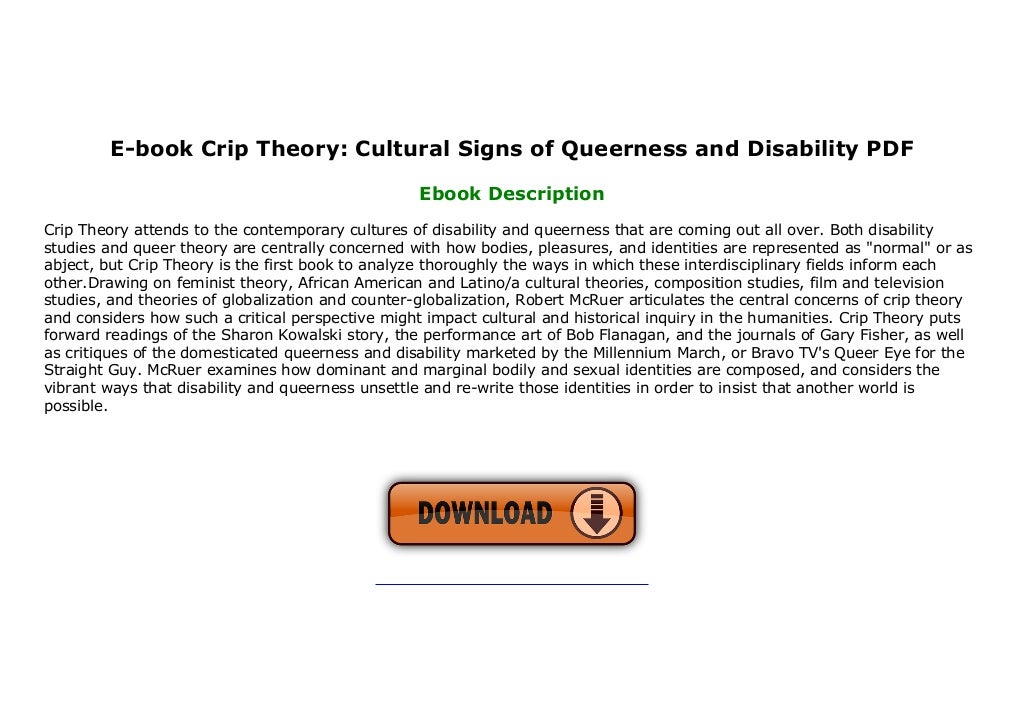

It is likely that a crip-based reading of the relationship between able-bodied and disabled sport, or between the Olympic Games and the Paralympic Games, would be discomfiting reading for sport administrators and organizers. Crip theory has its own radical and critical agenda, draws much upon personalized narratives, and has generated illuminating readings of films and other popular cultural forms. Crip theory and practice entails sustained forms of coming out, and the recognition that another, more accessible world is possible in which disability is no longer the raw material against which imagined and sometimes liberationist worlds are formed. Researcher Robert McRuer writes in his seminal work Crip theory: Cultural signs of queerness and disability 6 that, as with queer, the choice of the term.
The term ‘crip’ emerged in disability movements, as an adaptation and reworking of the derogatory word ‘cripple’ as McCruer states, the term’s ‘positive valences are…multiple’. Both disability studies and queer theory are centrally concerned with how bodies, pleasures, and identities are represented as normal or as abject, but Crip. Dominant conceptions of able-bodiedness in sport are vulnerable to critique in the sense that they have often matter-of-factly assumed the ideal body to be the platform for and pinnacle of sporting excellence. A strand of critical cultural analysis that, alongside ‘queer perspectives and practices’, has ‘been deployed to resist the contemporary spectacle of able-bodied heteronormativity’, as Robert McCruer ( Crip Theory: Cultural Signs of Queerness and Disability, 2006) puts it. Crip Theory: Cultural Signs of Queerness and Disability by Robert McRuer, Michael B rub Hardcover Buy New 89.


 0 kommentar(er)
0 kommentar(er)
